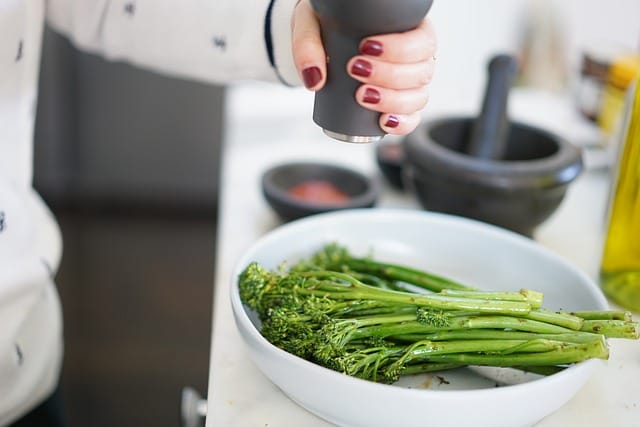How to grow Broccolini
Broccolini, also known as baby broccoli or asparation, is a popular vegetable that is a cross between broccoli and Chinese broccoli

In this article:
Introduction
Broccolini, also known as baby broccoli or asparation, is a popular vegetable that is a cross between broccoli and Chinese broccoli. It has a long, slender stalk with small florets at the top. Broccolini is packed with nutrition and has a mild, slightly sweet flavor. Growing broccolini in your own garden can be a rewarding experience. This article will guide you through the process of growing broccolini successfully.
What is Broccolini?
Broccolini is a hybrid vegetable that was developed by crossing broccoli with gai lan, also known as Chinese broccoli. It has long, thin stems (similar to asparagus) with small florets at the top. The tender and tasty stems are the main attraction of this vegetable. Broccolini is rich in vitamins A, C, and K, as well as dietary fiber and antioxidants.
Choosing the Right Location
Broccolini requires a sunny location with at least 6-8 hours of direct sunlight per day. It grows best in well-drained soil that is rich in organic matter. Ensure that the chosen location is sheltered from strong winds as it can damage fragile stems.
Soil Preparation
Prepare the soil by removing any weeds or rocks. Loosen the soil to a depth of 8-10 inches and incorporate organic matter such as compost or well-rotted manure. This will improve soil fertility and drainage. Broccolini prefers a slightly acidic soil with a pH between 6.0 and 7.0.
Seed Selection and Planting
Choose high-quality broccolini seeds from a reputable supplier. Start seeds indoors 6-8 weeks before the last expected frost of the season. Sow the seeds in containers filled with seed starting mix, covering them with a thin layer of soil. Keep the soil consistently moist and provide adequate warmth for germination. Once the seedlings have developed 2-3 true leaves, they can be transplanted into the garden.
Watering and Fertilization
Broccolini requires regular watering to ensure healthy growth. Keep the soil evenly moist, especially during dry periods. Avoid overwatering as it can lead to root rot. Use a balanced fertilizer during planting and side-dress with compost or a nitrogen-rich fertilizer every few weeks to promote vigorous growth.
Managing Pests and Diseases
Broccolini is susceptible to certain pests and diseases such as aphids, caterpillars, and clubroot. Monitor your plants regularly and take appropriate action at the first sign of infestation. Use organic pest control methods or insecticidal soap to control pests. Rotate crops each year to minimize the risk of soilborne diseases.
Pruning and Maintenance
Prune broccolini by harvesting the central stem when it reaches the desired size, usually around 8-10 inches in length. This will encourage the development of side shoots, which can be harvested later. Remove any yellowing or diseased leaves to maintain plant health. Regular weeding and mulching will help suppress weed growth and retain soil moisture.
Harvesting Tips
Broccolini is usually ready for harvest within 60-70 days after transplanting. Harvest when the florets are compact and bright green, and the stems are firm. Cut the central stem just above ground level using a sharp knife. This will enable subsequent harvests of side shoots, prolonging the harvest period.
Culinary Uses and Storage
Broccolini can be cooked in a variety of ways, including steaming, sautéing, stir-frying, or grilling. The tender stems can be consumed entirely, along with the florets. Use broccolini in stir-fries, pasta dishes, salads, or as a side vegetable. Store harvested broccolini in a perforated plastic bag in the refrigerator. It can be kept fresh for up to a week.
Frequently Asked Questions
Q: Can I grow broccolini in containers?
A: Yes, broccolini can be grown in containers as long as they are large enough to accommodate the root system and placed in a sunny location.
Q: How long does broccolini take to grow?
A: Broccolini typically takes 60-70 days to mature after transplanting.
Q: Can I save seeds from broccolini?
A: It is not advisable to save seeds from broccolini as it is a hybrid variety, and the resulting plants may not resemble the parent plant.
Conclusion
Growing broccolini can be a rewarding experience, providing you with a delicious and nutritious vegetable to enjoy. By following the steps outlined in this guide, you can successfully grow broccolini in your own garden. Remember to choose the right location, prepare the soil properly, select high-quality seeds, and provide adequate care throughout the growing season. Happy gardening!
